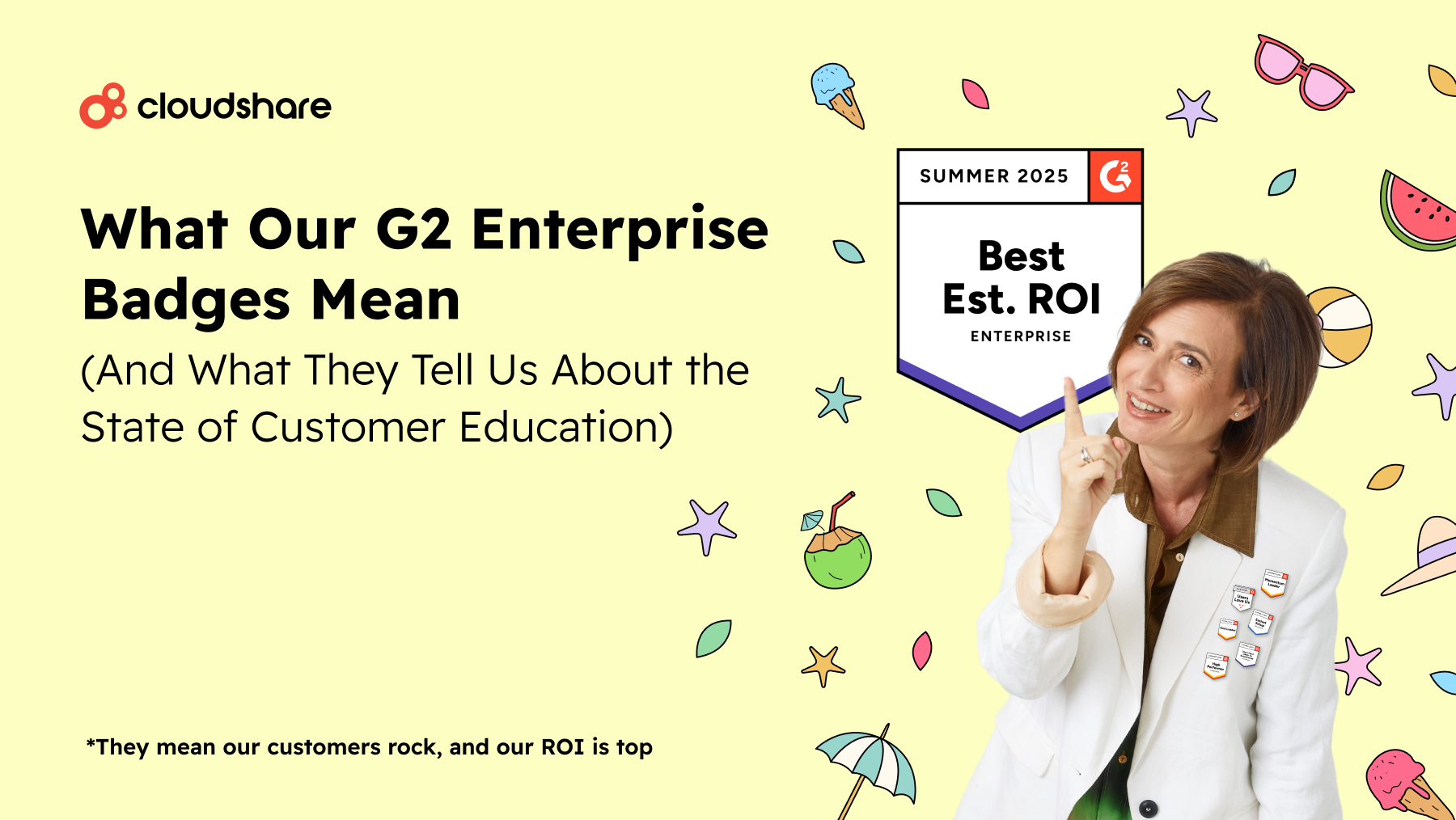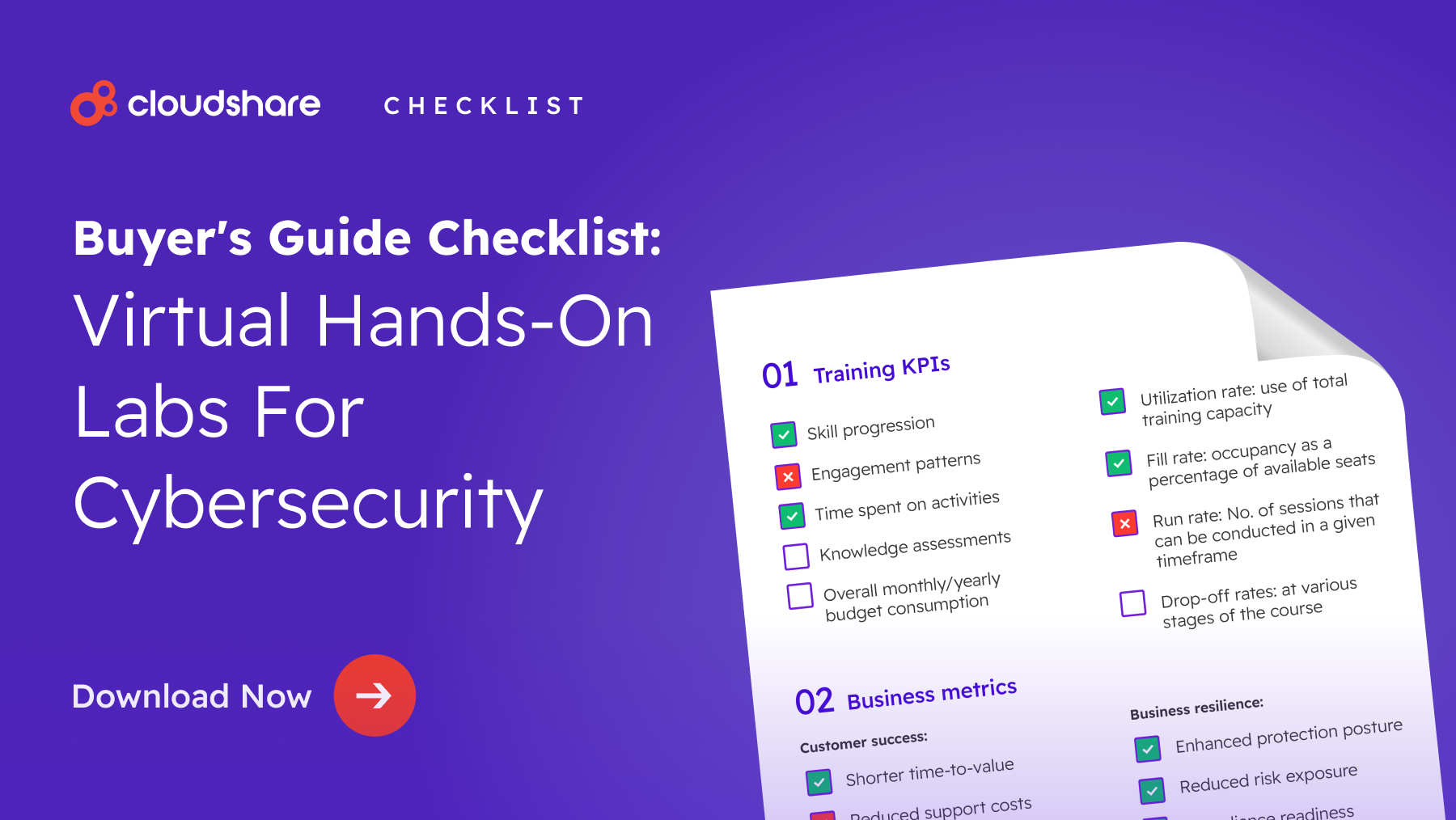
We’ve said it before, and we’ll say it again — onboarding is only the first step in customer education. To keep customers satisfied and ensure they continue getting the most out of your software, your business needs an ongoing customer training program. Yet many software companies choose to leave post-sales customer relationships entirely to their support team.
Revenue growth and customer enablement go hand-in-hand. Today, we’re going to discuss why customer training is the best way to cultivate customer enablement — and the role gamification plays in achieving both.
The Benefits of Customer Education
An effective customer education program is beneficial for your business in a few ways:
- Improves product adoption and faster time-to-value during onboarding.
- Provides insight into underused or underutilized software features.
- Reduces workload for your customer support team.
- Increases customer satisfaction, reduces churn, and increases renewal rate.
- Facilitates easier identification of upsell opportunities.
- Cultivates trust in both your software and your brand.
- Collects feedback from customers for feature improvements, optimizations, and additions.
- Customers with a deeper understanding of your software are less likely to be poached by a competitor.
What is Gamification?
Also known as gamified learning, gamification is a training strategy that applies video game principles and design elements to education. Rather than allowing knowledge to be “its own reward,” gamification instead seeks to make the learning experience more entertaining and enjoyable. The idea is that by incorporating game-like elements such as quests and rewards, people will be more motivated and engaged.
Gamification is a strategy that’s been gaining a lot of ground in the past few years, and with good reason. It’s incredibly effective. In a recent report published by Mordor Intelligence, gamification was found to increase customer acquisitions by up to 700% and improve customer engagement and loyalty by 30%.
Four Key Gamification Techniques for Customer Training
As a software company, you’re uniquely positioned to employ gamified learning in your customer education program. After all, your product exists in a virtual environment, just as a video game does. If you’re feeling ambitious, you could even go a step further and introduce game-like elements into your software’s core user experience.
For now, though, let’s focus on a few techniques you can apply as a foundation.
Points, Badges, and Achievements
Point systems represent one of the most common forms of gamification. By completing certain training tasks, customers are able to collect points. These points can then be used in a few different ways:
- Redeemed for discounts, access to exclusive content, or other rewards.
- As part of a leaderboard to foster healthy competition.
- To measure progress towards badges, achievements, or certifications.
Speaking of badges and achievements, these can be a reward on their own. HubSpot, for instance, offers several certification badges through HubSpot Academy. These certifications are widely used as competitive differentiators by both agencies and contractors working in fields such as marketing.
Badges don’t necessarily need to be practical, however. Most people who’ve spent time playing video games in the past decade or two will attest to the dopamine rush one can get from unlocking an achievement. A simple notification popup can act as a surprisingly effective motivator.
Challenges
Challenges are essentially a series of structured tasks or objectives that guide participants through the key lessons of a training program or course. Each task might explore one aspect of a key product feature, with the final task in the series requiring a customer to apply what they learned throughout the challenge. As an example, let’s say your company provides project management software.
Customers could be tasked with first setting up their own workspace, adding users to that workspace, creating a project and assigning tasks to individual users, completing their first task, and completing their first project.
For extra motivation, you can have each task provide an achievement, badge, or point reward.
RPG Mechanics
Now that we’ve covered the basics, let’s explore some of the more innovative tactics. For the uninitiated, a role-playing game (RPG) has the player control one or more characters in a virtual world. They then guide those characters through that world, improving the characters in order to take on increasingly difficult challenges. This is generally accomplished in two ways:
- Accruing experience points to progress toward milestones that increase a character’s strength.
- Acquiring new items and abilities.
Habitica, formerly HabitRPG, is an excellent example of how one might apply this framework to customer education. A task management app that leverages RPG mechanics to improve motivation and productivity, it features customizable avatars, equipment and abilities. Players can embark on quests or explore dungeons, progressing through them by completing tasks or goals.
Scenario-Based Learning
Cyber war games represent one of the most effective cybersecurity training techniques. Rather than having learners spend their time studying in a classroom or mucking about in a sandbox, war games put them right in the thick of things by having them navigate through any number of immersive simulated cyber incidents.
While you might not have any scenarios quite as adrenaline-packed as a mock data breach, you can just as easily brainstorm a few possible scenarios that provide customers with engaging hands-on learning opportunities.
Make Training More Entertaining
Customer education should be a part of every software company’s growth strategy. In order for that education to be effective, however, it needs to be compelling. Gamification is an excellent way to promote deeper engagement and motivate customers to learn more about your software.
But it’s also not the only viable training tactic, nor is it suitable for every use case. Every software company is unique, and what works for one might not work for another. As always, use your best judgment and apply what you know about your customers — the rest should fall into place.
Interested in learning more? Read about how artificial intelligence can help gamify customer education, then explore gamification as a corporate training model for learning and development.




